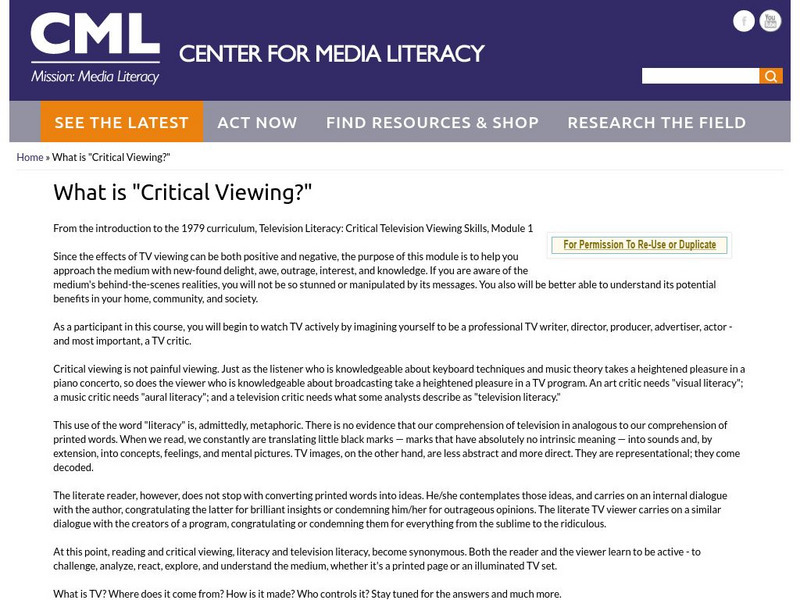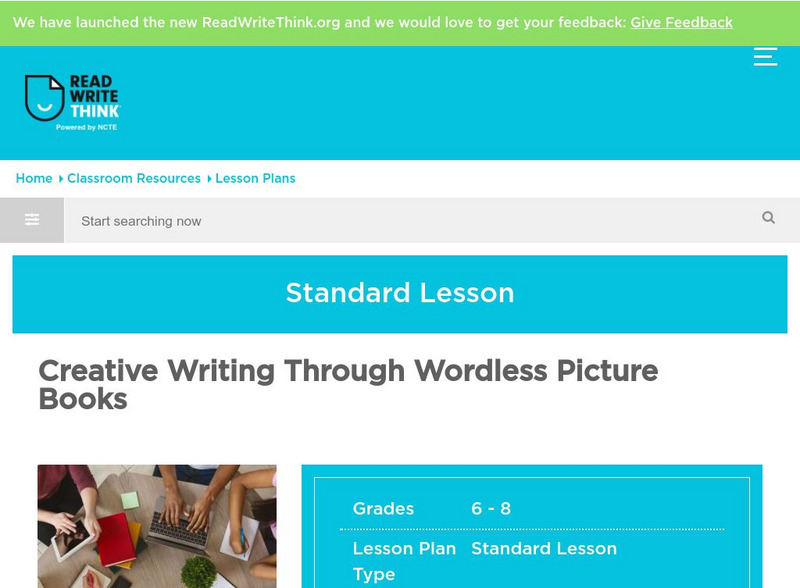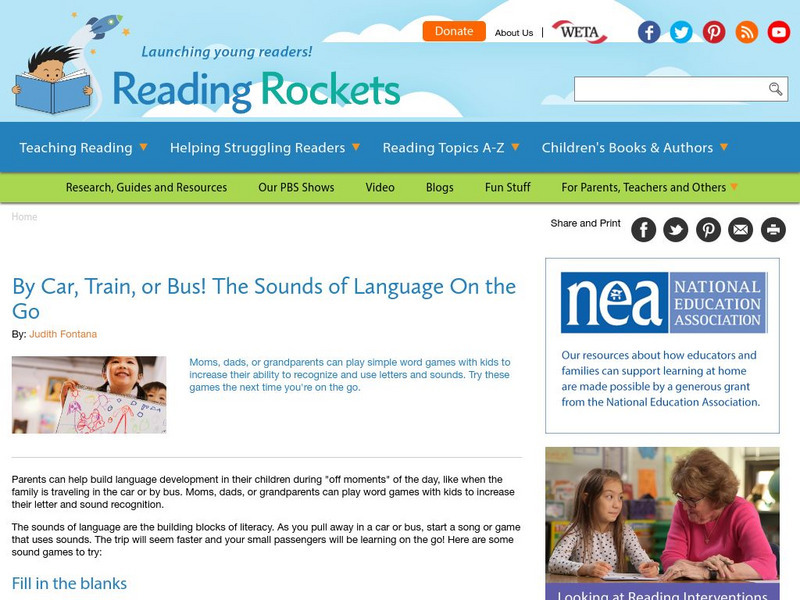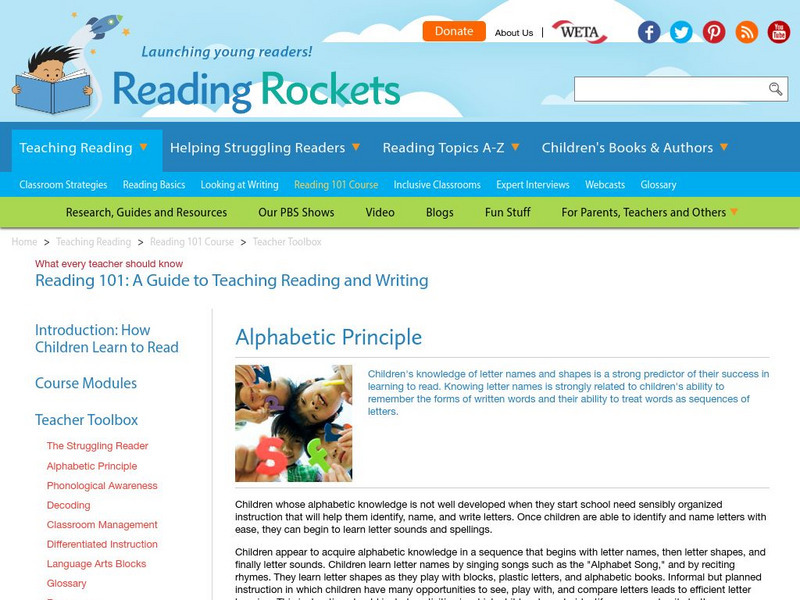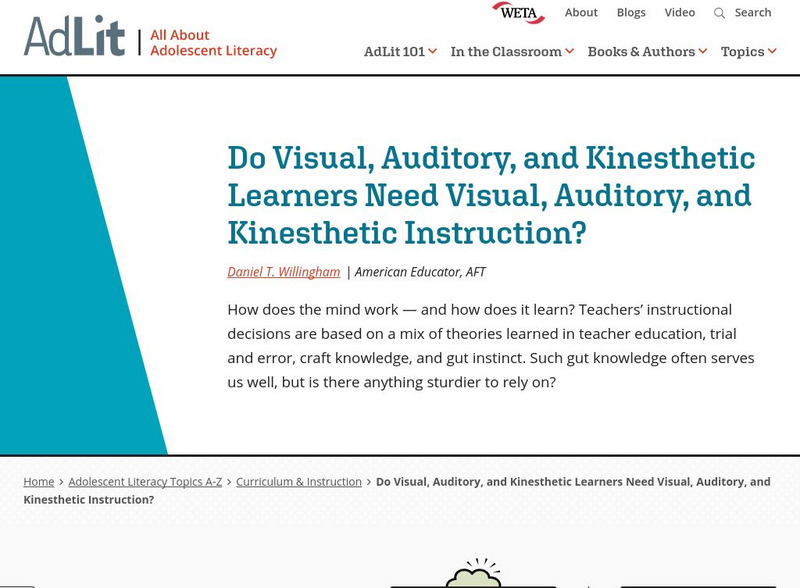Other
Center for Media Literacy: What Is "Critical" Viewing?
Understand the term "critical viewing" as it relates to visual literacy. Learn how to assess the media around you in order to become more knowledgeable and not easily manipulated by what you see.
Other
Center for Media Literacy: What Is "Critical" Viewing?
Understand the term "critical viewing" as it relates to visual literacy. Learn how to assess the media around you in order to become more knowledgeable and not easily manipulated by what you see.
ReadWriteThink
Read Write Think: Visualizing Using the Sketch to Stretch Strategy
Contains plans for three lessons to improve reading comprehension using a visualizing strategy called sketch-to-stretch. In addition to objectives and standards, this instructional plan contains links to sites used in the lessons as well...
Other
Visual Thesaurus: Shades of Meaning
In this lesson, small groups of students will compete in a "shades of meaning" contest to see which group can use the Visual Thesaurus to help them match words with similar definitions but different connotations in the shortest amount of...
Better Lesson
Better Lesson: Sl.4.5: Add Audio Recordings and Visual Displays to Presentations
Links to 31 lessons and activities that build student skills in standard SL.4.5: Add audio recordings and visual displays to presentations when appropriate to enhance to development of main ideas or themes.
Thinkport Education
Thinkport: Translating Qualitative & Quantitative Details a New Galaxy
In this science-themed literacy lesson, students learn how to read for and differentiate between qualitative and quantitative information.
Better Lesson
Better Lesson: Visual Representations in Informational Text
Students will look at examples of illustrations and diagrams in informational texts and discuss how each one helps enhance the text. Students gain the knowledge that sometimes a picture is worth a thousand words because a complex idea...
PBS
Pbs Learning Media: Greenland Mass Variation Since 2002
Scientists study ice sheets because they influence weather and climate, playing a role in atmospheric and ocean circulation. Ice sheets can also have huge impacts on global sea levels because they store so much water. Explore this...
PBS
Pbs Learning Media: Common Sense Education: Identifying High Quality Sites
Learn how to "test before you trust" the sites and information found on the Web in this lesson plan and student handout from Common Sense Education. Assessing what you find on the Web is an essential skill for today's young scholars. Use...
Other
Wes Tech Vision: Inspiration Software
This article explains why Inspiration is a must for your classroom. The author states that Inspiration is "Available to help learners of all ages bridge the gap between visual and textual literacy, and aid in concept development in...
Other
Sarah Sanderson Science: Visual Summaries
This strategy asks students to draw the main ideas in a text.
Reading Rockets
Reading Rockets: Decoding and the Jabberwocky's Song
What is reading? Explore this article from to find the answer to this question.
AdLit
Ad lit.org: Using Technology to Support Struggling Students
Science learning often involves creating abstract representations and models of processes that we are unable to observe with the naked eye. Learn more about visualizing, representing, and modeling to aid struggling learners.
Other
Santa Rosa Library: How to Evaluate Information Resources
Tips and information about how to evaluate resources, both print and electronic. Includes information about source authority, purpose, objectivity, currency, completeness, and relevance. It includes a printable handout (top right)with...
Better Lesson
Better Lesson: Sl.4.2: Pose an Respond to Specific Questions
Links to 38 lessons and activities that build student skills in standard SL.4.2: Pose and respond to specific questions to clarify or follow up on information and make comments that contribute to the discussion and link to the remarks of...
ReadWriteThink
Read Write Think: Creative Writing Through Wordless Picture Books
Need help planning ways to creatively teach your students chronological order? Here's a great place to start. While the site is specifically geared toward the middle school student, it is a teaching idea which could easily be adapted for...
CPALMS
Cpalms: What Do You Do With a Tail Like This?
[Free Registration/Login Required] In this lesson plan, students will use What Do You Do With A Tail Like This? by Steve Jenkins and Robin Page to identify the main topic and key details using the illustrations and text. Students will...
Better Lesson
Better Lesson: Tie It Up With Transition Words to Write a Story!
Read, write, and present a digital narrative with transition words to help us put the events in order! After modeling the lesson, groups of students will write narratives to recount a short sequence of events, they will include details...
ReadWriteThink
Read Write Think: Draw a Story: Stepping From Pictures to Writing
Help young students move from drawing pictures into writing simple stories. Good plan for having students put pictures in sequential order and teaching them about sequential order.
Better Lesson
Better Lesson: Go Figure With Figurative Language It Helps With Predicting!
In this lesson plan, students will use figurative language, digital tools, and illustrations to write a story. The teacher will model how to use an app that has onomatopoeia to create a story with a good beginning, middle, and end. A...
Reading Rockets
Reading Rockets: By Car, Train, or Bus! The Sounds of Language on the Go
Come and check out this awesome pre-reading resource. This site offers examples of simple word games you can play with kids to increase their ability to recognize and use letters and sounds. Try these games the next time you're in the...
Reading Rockets
Reading Rockets: The Alphabetic Principle
What are predictor's for a child's success in reading? Use this site to learn more how the knowledge of the alphabet and shapes is a factor for reading success.
AdLit
Ad lit.org: What Are the Key Elements of Student Engagement?
As part of their series to help schools understand the federal No Child Left Behind Law, Learning Point Associates describes the four key elements of student engagement - student confidence, teacher involvement, relevant texts, and...
AdLit
Ad lit.org: Do Learner Types Need in Style Instruction?
How does the mind work - and how does it learn? Teachers' instructional decisions are based on a mix of theories learned in teacher education, trial and error, craft knowledge, and gut instinct. Such gut knowledge often serves us well,...

